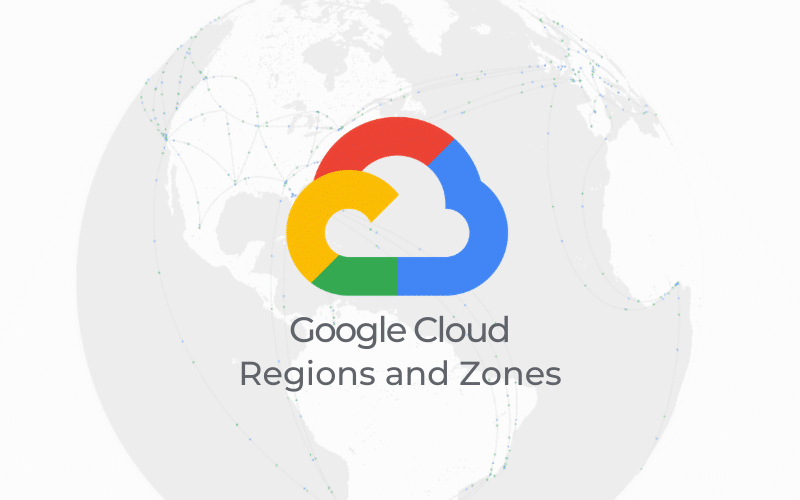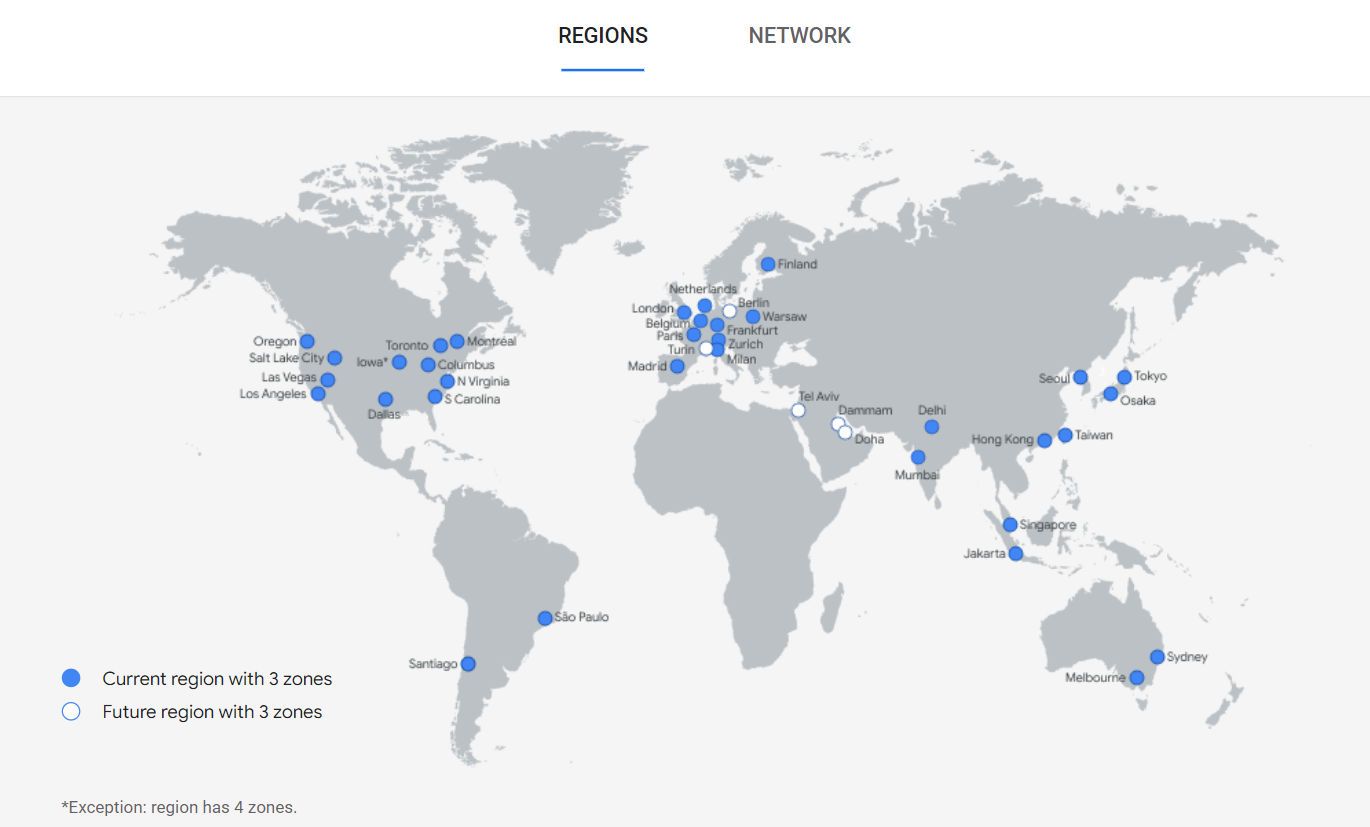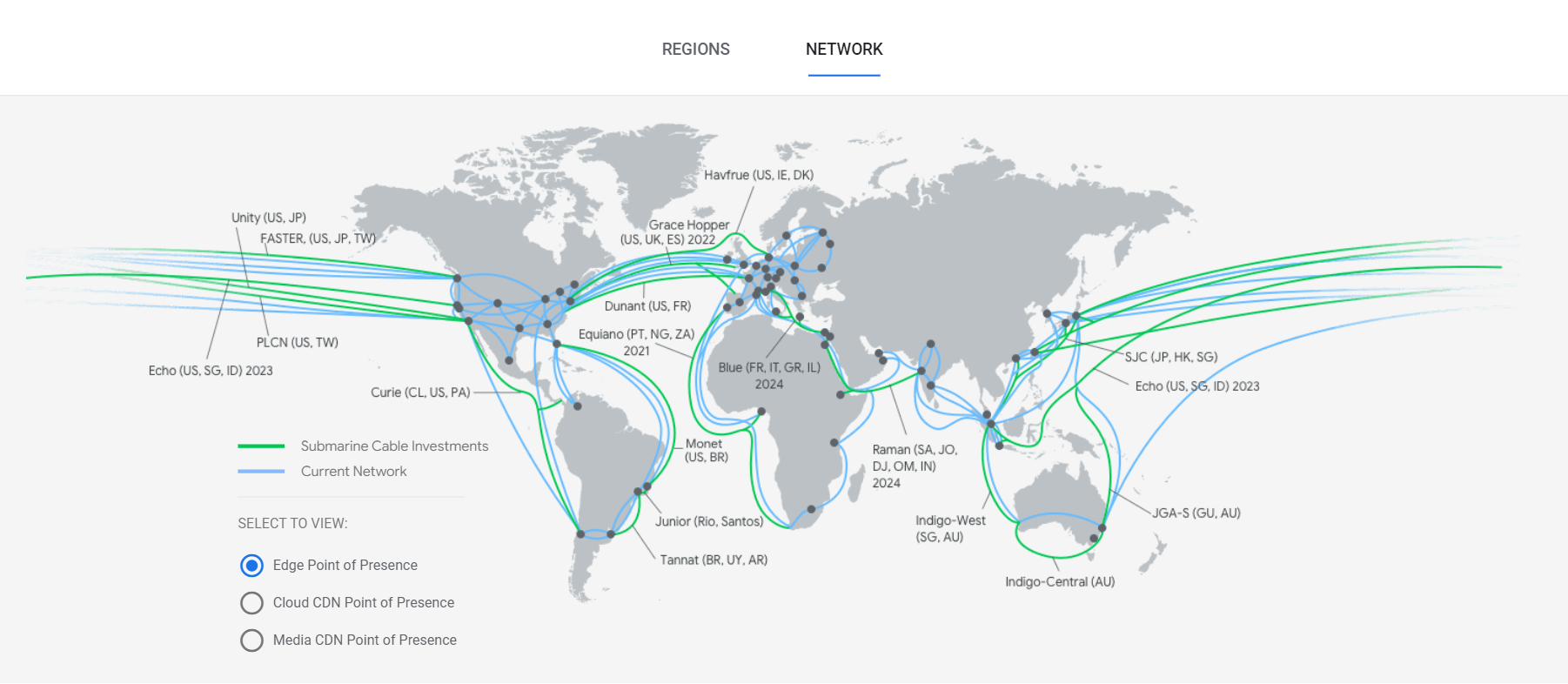Understand Google Cloud Regions and Zones
 Areeb Abdul Ghani
Areeb Abdul Ghani
Let's understand the need for regions and zones.
• Until now, when we were creating the cluster, we saw it was asking for a region or a zone. What were we choosing and why do we need multiple regions and multiple zones?
• If you do a Google search for Google cloud regions, you will land up on a page like this where you can see that on Google cloud right now, there are 34 regions, 103 zones, 173 network edge locations, available in 200+ countries and territories.
 • If you go further down, you will be able to see a simple network.
What you are seeing here are the different regions that are present right now.
• If you go further down, you will be able to see a simple network.
What you are seeing here are the different regions that are present right now.
 • The current regions which are currently active are all in blue and you can see that the future regions are in white.
• The current regions which are currently active are all in blue and you can see that the future regions are in white.
• So, you can see that Google cloud has regions across the globe. So, why we need regions? The most important reason for why we need regions is latency.
• Let's say, you have most of your user base in India. What would happen if i actually deploy the application in a region in US? There would be some latency in accessing the application and that's not good. So, that's the reason why you would want to have your application in one of the regions that is nearer to your users.
• The second reason is availability. Let's say you have your applications deployed in just one of these regions and there is some national calamity that happens in the specific region. What happens? Your application is not available anymore and that is the reason why you would want to distribute your applications across multiple regions. And this enables you to be able to provide more availability for your users.
• The third important reason is legal requirements. Sometimes a specific country might not want to store the data related to its citizens outside that country. For example, US might say, i don't want to store the data related to US customers outside the US and that's where you can use a region within US to store your data. So, the reasons why you have multiple regions is availability, latency, and legal requirements.
 • Now, what is the use of zones? Even within the same region, you can see that there are a few numbers in here. So, some region has three, some has four and so. All these things are what are called zones. AWS calls it Availability Zones, Google calls it Zones.
• Now, what is the use of zones? Even within the same region, you can see that there are a few numbers in here. So, some region has three, some has four and so. All these things are what are called zones. AWS calls it Availability Zones, Google calls it Zones.
• Within the region, you have a number of different physically isolated data centers. What this allows us to do is, even within the region, you can be highly available. If some specific data center goes down, if you actually deploy your application in multiple zones, then you can get more availability for your specific application.
• Typically, all the cloud providers have some concept of a region and some concept of a zone. And typically, all the cloud providers provide regions across the globe and almost all of them would have atleast two Zones or Availability Zones in every region.
Hope this will help someone Thanks for reading :)
That's it for today guys!
• Thanks for reading and i would love to connect with you guys on Socials
• Any feedbacks are welcome!!
Subscribe to my newsletter
Read articles from Areeb Abdul Ghani directly inside your inbox. Subscribe to the newsletter, and don't miss out.
Written by

Areeb Abdul Ghani
Areeb Abdul Ghani
• I talk about DevOps and write “Hello World” • Open Source enthusiast 🌐